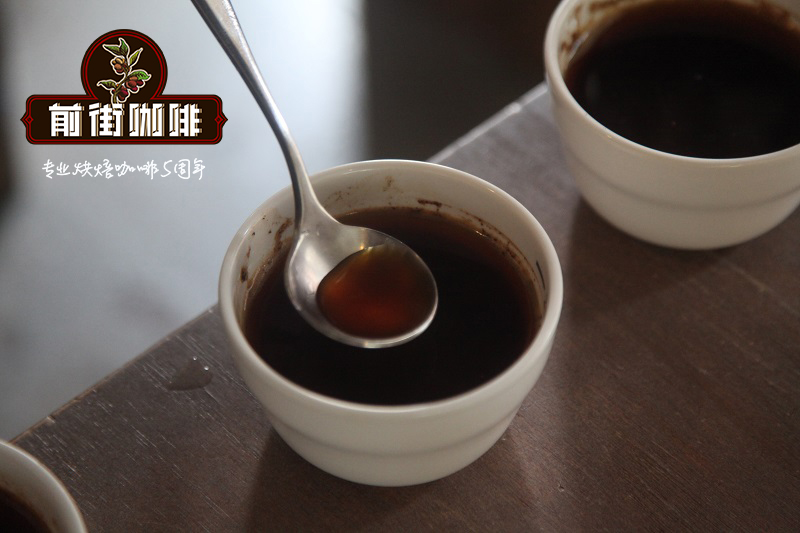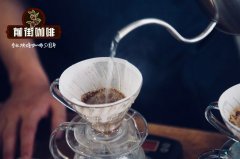Hawaiian coffee how to make Hawaiian coffee? Hawaiian Kona coffee flavor

Professional coffee knowledge exchange more coffee bean information please follow the coffee workshop (Wechat official account cafe_style)
Coffee plants were first introduced to Hawaii in 1817 during the reign of King Kamehameha, the first Spanish consultant, Don Francisco de Paula Marin. The planting was not successful, and in 1825 Oahu Mayor Chie Boki successfully introduced coffee from Brazil to Manoa Valley. Since then coffee has been grown all over the island. At present, there are about 950 farms growing coffee in Kauai, Oahu, Maui, Mokokai and Big Island, most of which are family-run small farmers, covering a total area of 7900 acres.
There are two coffee producing areas in Hawaii that have to be mentioned: Kona and Kaofu.
Can accept
When it comes to Hawaiian coffee, most people think of Kona, Kona coffee. In 1828, missionary Samuel Ruggles first planted coffee in the Kona area of the big island. To date, Kona coffee production accounts for about half of Hawaii's total coffee production, with about 600 independent farms located in the north and south of Kona. But most of the coffee is grown on the west side of Manua Loa and on the slopes of the Hualailai volcano, mostly at low and middle elevations, about 3000-2000 feet. The volcanic area has always been famous for its black soil, which is moderately acidic and alkaline, is more rich in minerals, and helps to maintain soil water content. But the area is sunny early in the morning, and clouds begin to emerge at noon, which happens to keep coffee seedlings away from the hot afternoon sun, so it is said to be suitable for coffee pollination and flowering, contributing to the fruiting climate of coffee cherries.
Mark Twain, an American writer, mentioned in Letters from Hawaii in July 1866, "Kona coffee has a richer flavor than any other, be it grown where it may and call it by what name you please." Legend has it that since then, Kona coffee has become its favorite. Coffee experts believe that Kona Coffee is on a par with Jamaican Blue Mountain Coffee, with an elegant and mellow taste with slightly sour fruit. With the adjustment of roasting degree, it can be a cup of pure tea or a cup of delicious fruit juice.
KAU card fog
In recent years, Hawaiian Kau card fog coffee has been paid attention to in the United States. Planted at an altitude of about 3000-2000 feet above sea level on the east side of the Manua Loa hillside. Most of the award-winning estates are located in the northernmost town of Pahala in KA'U area of the big island. The topography of the KAU area varies greatly, with coffee grown on sunny slopes, plenty of sun in the early morning combined with cloudy and foggy weather in the afternoon, and the mineral-rich black soil of the world's largest Manua Loa volcano is not only moderately acidic and alkaline, but its porous texture helps to maintain moderate water content. Create the best growing environment for coffee trees.
Originally, the Kawu area mainly planted sugarcane, but in 1894 it began to grow a small amount of coffee. Until the sugar price plummeted in 1996, the Kawu area actively transformed from sucrose to restart coffee cultivation. Thanks to the efforts of farmers, it caught up with excellent soil conditions and intensive farming techniques, and began to participate in regional and national cup testing competitions. From then on, it was repeatedly praised. In the cup test competition held in SCAA in 2011, Cafe Coffee not only won the first prize in Hawaii, but also won the honor of top coffee in the world. Cafu coffee is praised by experts as it has a rich, thick taste and unique aroma, such as walking in the garden, the entrance is as smooth as silk, and world-famous coffee brands have snapped up, making it a rising star of Hawaiian boutique coffee.
Coffee experts often compare the Kona coffee produced in Hawaii with the blue mountain coffee produced in Jamaica, both of which have mild and suitable acidity and the sweetness of delicate fruits. However, due to the strict quality control of Kona coffee, there is no bad evaluation of Kona coffee to maintain a high level of quality, unlike the occasional murmur of poor evaluation of blue mountain coffee.
Shallow baked (City) Kona grinds with a hint of plum acid, boiled with the aroma of Tieguanyin ripe tea, clean, fresh and moist without impurities, light citrus acid turns into banana pineapple sweetness, and the sweetness of brown sugar swirls in the mouth and nose.
The medium-baked Kona mainly gets a balanced, warm, sweet nectar and elegant, full-bodied taste. Brewing coffee gives off the sweet fruit aroma of cantaloupe, which makes people feel sweet and happy. Yuyun, a kind of smooth malt sweet slips into the throat and then rushes on the throat, letting sweetness stay in the mouth all the time.
The Hawaiian coffee on Qianjie comes from the Kona producing area and likes the special flavor of the Kona coffee very much.
The recommended brewing parameters of Qianjie coffee:
V60ap90 ℃ / 1 15 / time two minutes
Flavor: Mulberry, sucrose
Important Notice :
前街咖啡 FrontStreet Coffee has moved to new addredd:
FrontStreet Coffee Address: 315,Donghua East Road,GuangZhou
Tel:020 38364473
- Prev

Panamanian Coffee theme _ the Light of the World in Panama-Rose Summer
Professional coffee knowledge exchange more information about coffee beans Please pay attention to the origin and origin of the coffee workshop (Wechat official account cafe_style). In English, it is called Gesha or Geisha, because its pronunciation is similar to that of a Japanese geisha, so it is also called Yiqiao beans. It is now generally believed that the best rose summer is produced in Panama, but this variety was actually produced in Ethiopia as early as 1931.
- Next

How do you make Hawaiian coffee? what are the producing areas of Hawaiian coffee?
Professional coffee knowledge exchange more coffee bean information please follow the coffee workshop (Wechat official account cafe_style) about Kona, coffee drinkers have heard of his acidity and rich fruit acid characteristics, but in fact the term Kona can only represent the coffee beans produced in the state of Hawaii, their quality and taste vary greatly between different products, there is no way to accurately describe it, because
Related
- Detailed explanation of Jadeite planting Land in Panamanian Jadeite Manor introduction to the grading system of Jadeite competitive bidding, Red bid, Green bid and Rose Summer
- Story of Coffee planting in Brenka region of Costa Rica Stonehenge Manor anaerobic heavy honey treatment of flavor mouth
- What's on the barrel of Blue Mountain Coffee beans?
- Can American coffee also pull flowers? How to use hot American style to pull out a good-looking pattern?
- Can you make a cold extract with coffee beans? What is the right proportion for cold-extracted coffee formula?
- Indonesian PWN Gold Mandrine Coffee Origin Features Flavor How to Chong? Mandolin coffee is American.
- A brief introduction to the flavor characteristics of Brazilian yellow bourbon coffee beans
- What is the effect of different water quality on the flavor of cold-extracted coffee? What kind of water is best for brewing coffee?
- Why do you think of Rose Summer whenever you mention Panamanian coffee?
- Introduction to the characteristics of authentic blue mountain coffee bean producing areas? What is the CIB Coffee Authority in Jamaica?

